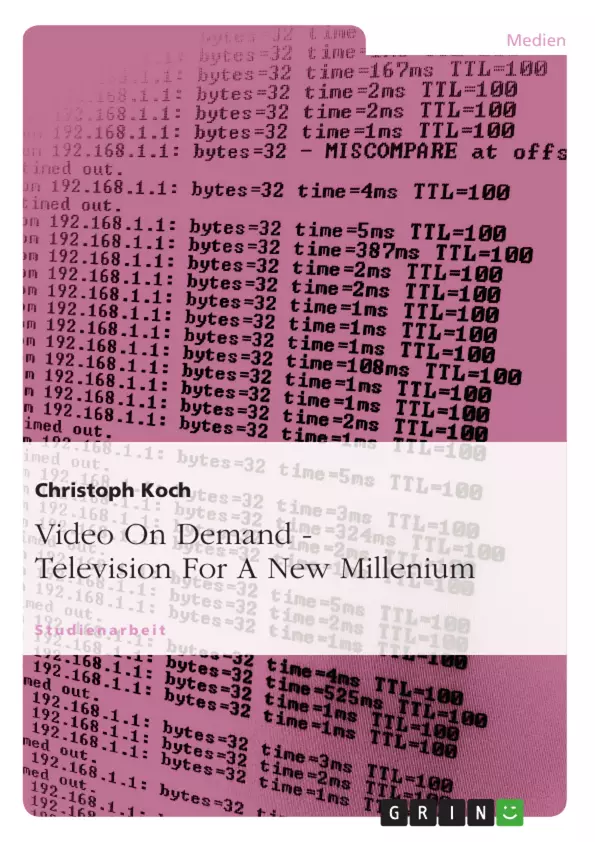There has been a lot of talk about video on demand (VOD) in the last couple of years. Scenarios of a bright future for couch potatoes who had a whole videostore at their fingertips were constantly wandering through the media. When the Internet became a huge success the attention and future fantasies shifted away from the television and video on demand towards the computer.
But how interesting and important is VOD really? The following chapters will explain what VOD exactly is, how it works and who’s standing behind it – its advantages and possibilities as well as its disadvantages and limitations.
Inhaltsverzeichnis (Table of Contents)
- Introduction
- How video on demand works
- Near video on demand (NVOD)
- Instantaneous video on demand
- Live Interactive video on demand
- Video on demand (VOD) or true video on demand
- VODs background and who is promoting it
- Specific problems is VOD designed to solve..
- Interconnections with other media
- Economic, regulatory and other constraints at work
- Successful and unsuccessful applications
Zielsetzung und Themenschwerpunkte (Objectives and Key Themes)
This text aims to explain the concept of video on demand (VOD), exploring its technical aspects, development, and the challenges it faces. It investigates the various forms of VOD, its underlying technology, and the players involved in its promotion.
- Technical aspects of video on demand (VOD)
- Historical development and current state of VOD
- Economic and regulatory factors influencing VOD adoption
- Key players and their strategies in the VOD market
- Interconnections and implications of VOD for other media industries
Zusammenfassung der Kapitel (Chapter Summaries)
The introduction provides an overview of video on demand (VOD) and its significance. It explores the evolution of the concept and highlights the growing interest in its potential.
The chapter on how video on demand works details different forms of VOD, including near video on demand, instantaneous video on demand, live interactive video on demand, and true video on demand. It elaborates on their features, interactivity levels, and technical requirements.
The chapter discussing VOD's background and promoters explores the history of VOD and key players involved in its development. It analyzes efforts made by companies like Time Warner Cable and Diva Systems to bring VOD to fruition, highlighting challenges and strategies.
Schlüsselwörter (Keywords)
Video on demand (VOD), Near video on demand (NVOD), Instantaneous video on demand, Live Interactive video on demand, True video on demand, Interactivity, Bandwidth, Fiber optics, Cable modems, Digital television, Interactive television, Intelligent agents, Digital hardware standard, Co-operation, Market competition, Economic constraints, Regulatory constraints, Media convergence, Digital media.
- Arbeit zitieren
- Christoph Koch (Autor:in), 1998, Video On Demand - Television For A New Millenium, München, GRIN Verlag, https://www.hausarbeiten.de/document/3948


